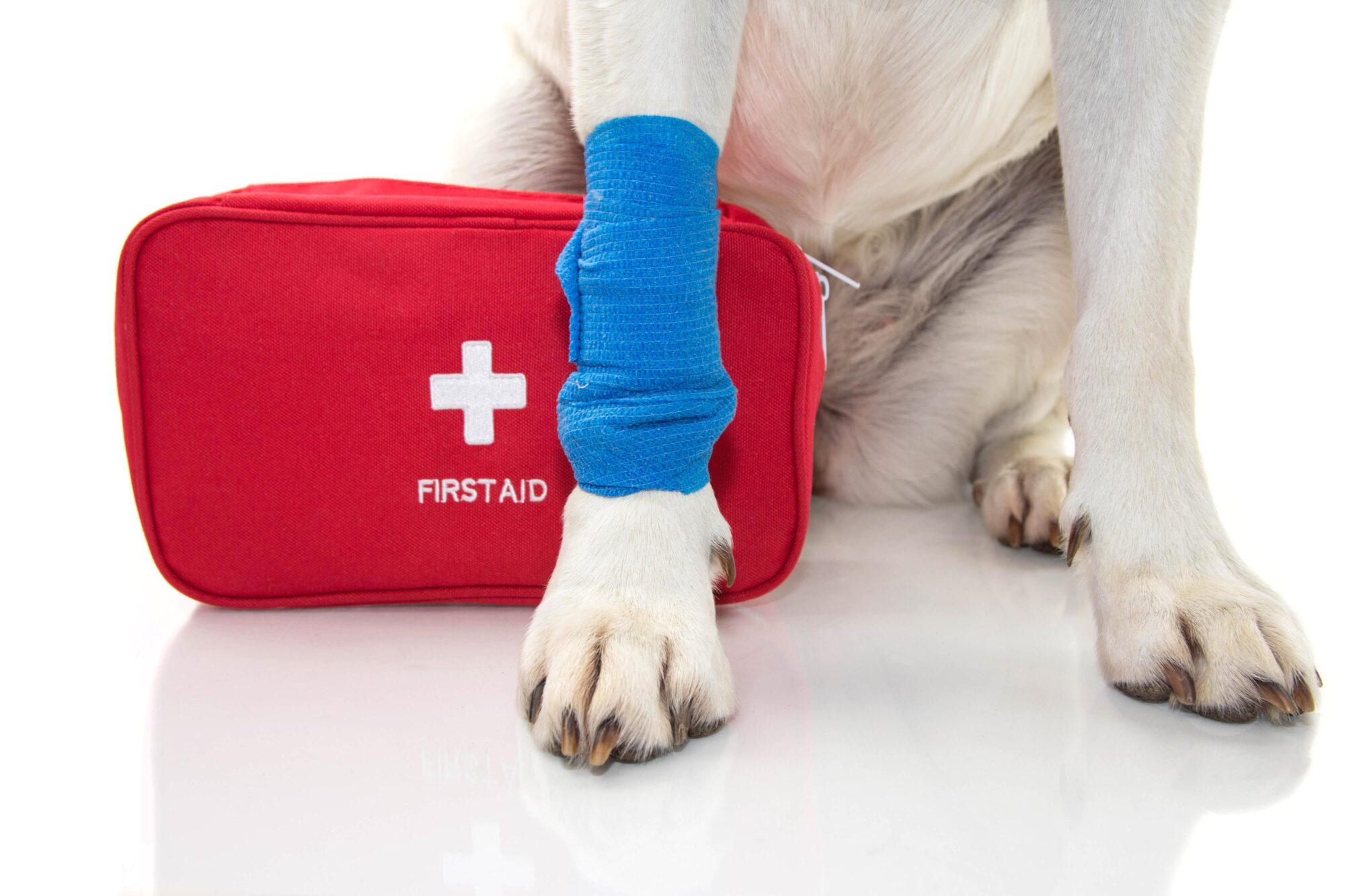Essential Pet First-Aid Tips and Techniques

Even the most involved, vigilant, and responsible pet owners cannot control every possible circumstance related to a pet’s health and safety. The fact is that despite best intentions, pet emergencies simply come with the territory. The good news is that not all scenarios are perilous; however, the more prepared an owner is to handle essential pet first-aid techniques, the better the outcome.
Fully Stocked
Because pet emergencies can happen anytime and anywhere, pet owners may opt for multiple pet first-aid kits. Keep one fully stocked at home, in each vehicle you own, and always take one wherever you go with your pet. Items can expire or become ineffective over time, so replenish as needed.
Each pet first-aid kit should have:
- Wound care supplies like gauze, non-stick bandages or tape, cleanser/antiseptic, antibacterial ointment, towels, and scissors.
- Rectal thermometer
- A muzzle (never use on a pet that’s unconscious, vomiting, has a mouth injury, or isn’t breathing), cone collar, spare leash
- Styptic powder to control bleeding from small cuts
- Activated charcoal (but only use after speaking with your pet’s vet)
- Gloves
- Tweezers
- Flashlight
What Can You Do
It can be confusing to know when to treat a pet yourself (and wait for signs of improvements) versus when to seek emergency or urgent care. Even subtle shifts in their behavior can signal the need for immediate assistance.
Breathing problems and excessive bleeding are two problems that require veterinary intervention. We also recommend quick action following the sudden arrival of any of these:
- Deep, penetrating wounds from a bite, collision, or fall
- Blunt force trauma
- Broken bones
- Paralysis
- Weakness
- Appetite loss
- Coughing fits
- Not drinking
- Problems urinating or defecating
- Loss of balance or coordination
- Distended or swollen abdomen
- Sustained vomiting and/or diarrhea
- Seizures
- Signs of severe pain
Don’t Panic
Seeing a pet in pain can be frightening, but it’s vital to ensure they cannot harm themselves or you in the process of examining and/or treating them. If you’re able to assess their breathing, heart rate, temperature, and alertness, your observations may help you provide basic pet first aid.
Transporting your pet to the hospital can be challenging if they are aggressive or too large to carry. Ask people you know for help to gently secure your pet. Towels, blankets, or straps can be used to shift a pet’s weight onto a makeshift stretcher or board.
Starting CPR
If a pet is not breathing and you cannot find a pulse, they need cardiopulmonary resuscitation (CPR). Check the Red Cross website for more details.
- Place the pet on their side.
- With one hand on top of the other, compress the chest 120 times (2 compressions a second), breaking every 30 compressions for 2 breaths.
- Compressions for large pets go over the widest part of the chest; compressions for smaller pets go near where the elbow joins the chest; barrel-chested dogs must lay on their back for compressions directed over the sternum.
- For breaths, seal your pet’s mouth with one hand and blow air directly into their nostrils.
- Check for a heartbeat after 2 minutes of 120 compressions and 8 breaths.
- If they start breathing on their own, stop CPR and manage other symptoms.
If you have additional questions about your pet’s health, behavior and safety, please call Curem Veterinary Care at (480) 787‑0544. Our team is always here to help your pet.
